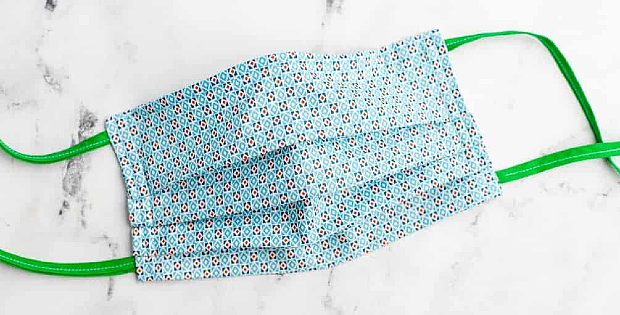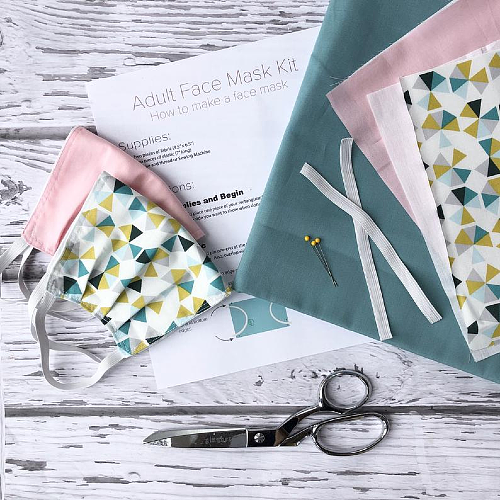What’s the Best Material for a Face Mask?

Here are the Latest Guidelines About Fabric, Filters and More!
Federal health officials are now recommending that we all cover our faces with a fabric mask of some kind when going out. The primary concern is to prevent those who may or may not know they’re contagious from spreading COVID-19 by blocking outgoing germs.
However, many of us are just as concerned about protecting ourselves from contracting the virus by blocking incoming germs. There have been many guidelines and debates about what materials are most effective in doing that.
First, the fit of the mask is crucial in blocking incoming germs. For best effectiveness, it needs to fit closely all around the face so that you’re breathing entirely through the mask.
Secondly, any type of mask is better than no mask at all. While tee shirt fabric, bandanas and more have been suggested (and help in a pinch), some types of fabric are much more effective than others at blocking viruses.
Photo of a face mask kit from Califorina Paws.
The latest test results show that one of the most effective fabrics is … quilting cotton. Tightly woven, high quality quilting cotton can block 70 – 79% of particles in the air.
An article by Tara Parker-Pope for The New York Times states:
“The best-performing designs were a mask constructed of two layers of high-quality, heavyweight “quilter’s cotton,” a two-layer mask made with thick batik fabric, and a double-layer mask with an inner layer of flannel and outer layer of cotton.”
The article goes on to explain how to tell whether or not a fabric will perform well by conducting a light test, how to test for breathability and whether or not additional layers help.
It also presents the results from tests of coffee filters, furnace filters, vacuum bags and more.
If you’re making masks, whether for yourself or others, you’ll want to read this excellent article. It even links to a pattern for an effective folded paper mask for those who don’t sew.
For mask-making info visit:
Make a Protective Face Mask from Scraps (surgical style masks)
This Mask Was Designed By a Doctor (good info about using vacuum bags safely)
Photo Source: The photo at the top of the page is from “How to Sew a Surgical Face Mask for Hospitals – Free Pattern” from Sarah Maker.













So…remember, no matter WHAT fabric you use, or what filter you insert into your homemade mask, it will NOT PROTECT YOU FROM THE VIRUS. I am an RN. Our homemade masks do not have the proper type of seal that will allow an airtight fit. Without that, no amount of layers of quilting cotton, HEPA filters, etc. will help. You have constant air leakage happening around the sides of your homemade mask. These masks are only designed for one thing: Protecting others from YOUR secretions. Please keep that in mind when you wear your homemade masks. Keep making them – they can help protect others around the wearer, in case that wearer is an asymptomatic carrier of COVID-19.